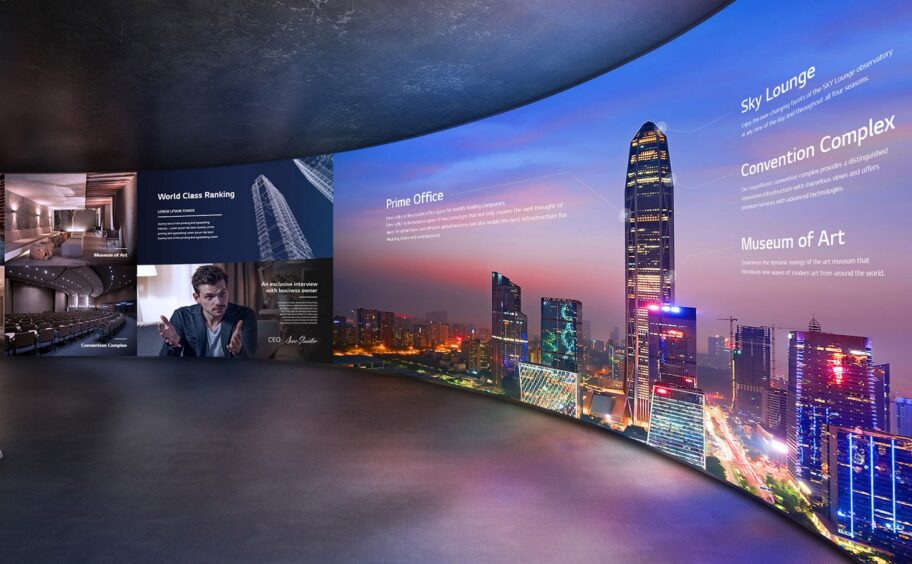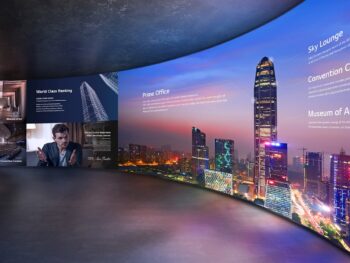About the choice of LED screen for the stage, involving brightness, white field color coordinates and other important technical parameters, this article focuses on 3 technical parameters related to the brightness of the LED screen: brightness, contrast and brightness discrimination level.
At present, LED display is widely used in different industries such as theater stage arts performance, advertising media, stadiums, remote monitoring, securities trading, etc. The installation locations include professional performance venues, street markets, bus (aircraft) halls, shopping malls and supermarkets, and other different places. Due to the use of different industries, workplaces and different environments, the requirements of the display screen are not the same. The requirements for brightness of LED display for theater stage performance are obviously different from other industries.
Brightness is an important technical parameter to measure the LED display. Display manufacturers or agents are often claiming that their products use high-brightness chips when selling their products; some performance venues in the purchase of LED display often ask the supplier ” What is the highest brightness of your display can reach?” The reason why we pay so much attention to the brightness, is related to the visual characteristics of the human eye. The human eye to see any object is due to the object emitted light through the pupil, lens, vitreous ultimately in the retina image and stimulate the visual nerve, so that the brain to produce visual information about the object. If the light emitted from the object is stronger, then the brain produces stronger visual information, whereas conversely the visual information produced will be weaker. The human eye relies on light to recognize objects, and the difference in the intensity of light entering the eye naturally causes the human visual system to differ in brightness. The human eye will give priority to the brighter objects within the visual field, and this visual physiological phototropic property also makes people subconsciously concerned about brightness.
- 1.The luminosity of the luminous body and the brightness of the reflector
Search the word “brightness” in Google, its definition is: “the brightness of a luminous or reflective body to the human eye”. It can be seen that luminous objects will make the human eye produce a sense of brightness, non-luminous objects by their own reflection of light can also make the human eye produce a sense of brightness.
The audience in the theater to watch the show, the LED display is seen on the screen is the display itself emitted light, the actors are seen is the reflected light of the actor’s body.
The light intensity emitted by the luminous body and the ratio of the light source area, defined as the luminance of the light source, the unit of luminance is candela / square meter (cd / ㎡). The brightness of the LED display using a high-brightness chip can reach thousands of cd/㎡.
The reflected light from the actor’s body is the light shining on the body from the stage luminaires and the surrounding environment. Illuminance refers to the visible light flux received per unit area, the illumination of the actor’s body that the stage lamps and lanterns shine on the actor’s body light intensity size. The name of the unit of measurement of illumination is lux (lx), 1 lx = 1 lm/㎡.
L=E×ρ/π (1)
In the formula: L is the brightness, the unit is cd/㎡
E is the illuminance, the unit is lx
ρ the reflectivity coefficient of the object
- 2.The light ratio in the stage picture
The art of stage lighting is extremely concerned about the light ratio. Light ratio is demonstrated to the audience in order to show the needs of the plot of the entire picture of the size and intensity of the difference between the light in various parts, which is a reflection of the director and lighting designer’s artistic creation. In order to achieve the artistic ideas of the director and lighting designer, using the human eye’s tendency to light to guide the audience’s attention to the role of the performance. In shaping a character, in addition to casting different light ratios of the main light, auxiliary light, back-lighting, but also well-designed character and the stage background light ratio, and the surrounding scenery props of the light ratio, etc..
In the case of using LED display for background on stage, if you highlight the actors according to the light ratio of 3:1, the brightness of other parts of the stage screen (including the brightest part of the LED display) should be less than 85 cd/㎡. If the performance is a comedy show, just need a bland light ratio, the brightest part of the LED display on the stage brightness also only need 254.8 cd/㎡. Therefore, as a self-luminous device LED display, its brightness should be adjustable, as the stage with LED screen, should be able to adjust according to the brightness of the stage actors and the needs of the program plot. In fact, for most performances, if the brightness of the LED screen can be continuously adjustable between 0 ~ 800 cd / ㎡ is enough to use.
- Practical example
Stage performance is a comprehensive art form, the display screen is designed to match and set off the performance of the actors and is designed to serve the program and the actors, not to compete with the actors to grab the audience’s sight, and should choose the appropriate brightness to present a unified and harmonious perfect stage picture for the audience.
Figure 1 is the Shanxi Jin Theatre “playing the golden branch” stills, the actors and the display background light ratio of about 3.5:1, the stage picture light ratio is more appropriate, the display screen both expresses the plot environment, but also set off the performance of the actors.
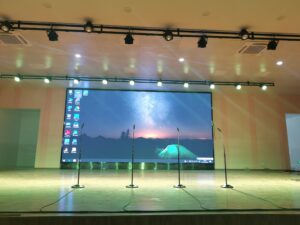
Figure 1 The appropriate light ratio between the actor and the display background (about 3.5:1)
If the brightness of the display is too high, it will dilute the audience’s attention to the actors. Figure 2 is a small theater performance stills in Taiyuan City, the brightness of the display background light exceeds the brightness of the actors, the actors and the display background light ratio of about 1:2.
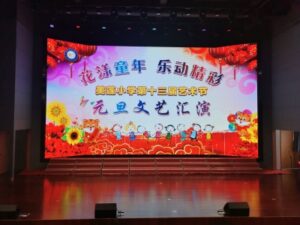
Figure 2 Small light ratio of actor to display background (about 1:2))
Figure 3 the host of the stage is completely no facial light, looks like a silhouette, completely become a companion to the LED display screen. the brightness of the LED display is not necessarily lower than the actors, due to the needs of the artistic presentation of the program, will also need to display a brighter display, such as some actors and display screen interaction plot, some silhouette of the dance program, etc., will require a display brightness greater than the brightness of the actors.
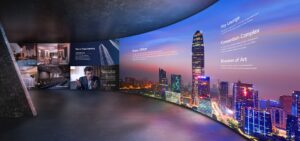
Figure 3 Very small light ratio between actor and display background (no facial light)
It is worth noting that all displays within the scope of the stage screen may affect the performance effect. If the brightness of the secondary screen and subtitle screen on both sides of the stage is too strong, it will scatter the viewers’ eyes, and it is difficult for the audience to focus on the actors in the middle of the stage, therefore, the brightness of the secondary screen and subtitle screen used should also be moderately decreased. In addition, if a subtitle with the screen is used, the subtitle screen screen will affect the audience’s recognition of the text, the text of this screen display effect is in turn less than the monochrome screen, even if it is a monochrome subtitle screen, the brightness should not be too high.
The brightness of the LED display for the stage should be continuously adjustable, not only refers to the full-color background screen, but also includes the secondary screen and monochrome subtitle screen should have the function of continuous adjustment of brightness. Only in this way, a variety of stage lighting can be properly matched with each display, together to create a clear, vivid and harmonious stage picture.
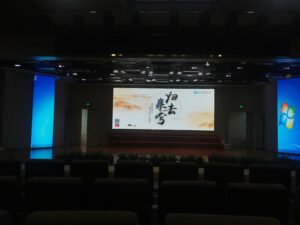
Figure 4 Meet the effect of the contrast of the general performance
- Contrast and brightness identification level
Contrast ratio and brightness discrimination level are two technical parameters related to brightness.
Contrast ratio is the ratio between the brightness of the display and the background brightness of the screen when the display is darkest (for example, when the display is completely off) under a certain ambient illumination. The highest contrast ratio is the ratio of the maximum brightness of the LED to the background brightness under a certain ambient illumination.
High contrast ratio of the display means that the display screen has a large difference between light and dark, the picture viewed by the audience will have a relatively high clarity and present a more brilliant light color. Relatively speaking, the contrast index is more reflective of the display effect than the brightness index.
The industry standard SJ/T11281-2017 “Light Emitting Diode (LED) Display Test Method” for indoor screens specifies the measurement environment conditions of 10 × (1 ± 10%) lx illumination in the direction normal to the screen [4]. Some manufacturers give the contrast ratio data of LED displays as 3 000:1, 5 000:1, 6 000:1, etc. The technical parameters of the products provided by responsible manufacturers must be measured in strict accordance with the provisions of industry standards. Unfortunately, such measurement conditions are not at all applicable to the theater stage with display. When the performance is on, the stage is in the face light, top light, side light, ear light and other stage lighting, the illumination of the main stage area reaches thousands of lx, even if located at the back of the stage at the background of the display surface also reaches several hundred lx illumination, in order to highlight the actors, the director will also request to limit the brightness of the display. Therefore, the theater stage LED display contrast data should be limited brightness and screen surface in the higher illumination environment measurement. In the “theater stage with LED display specifications” before the introduction, the manufacturer gives the LED display contrast data can only be used as a reference.
The brightness of the display depends on the size of the LED chip current or the size of the current pulse width. The combination of electronic circuitry and software in the display can provide 256 or even 1,024 levels of current variation to the LED chip, but due to the limitations of the human eye’s visual ability, it cannot fully identify so many brightness levels. The brightness level from the darkest to the brightest that can be distinguished by the human eye in the display screen is called the brightness discrimination level. The higher the luminance discrimination level, the more layers of the displayed image, which means the more delicate and colorful the displayed image is.
In summary, for the theater stage using LED display, it does not necessarily require a very high brightness, but the need to be able to continuously adjust the display brightness easily according to the requirements of the director and lighting designer during the performance. For example, the brightness of the LED display for the stage should be able to continuously decrease from the brightest to the maximum brightness of 10%, 5%, or even down to 0. Relatively speaking, the contrast and brightness identification level of the indicators are better than the brightness indicators to reflect the good or bad display effect.
